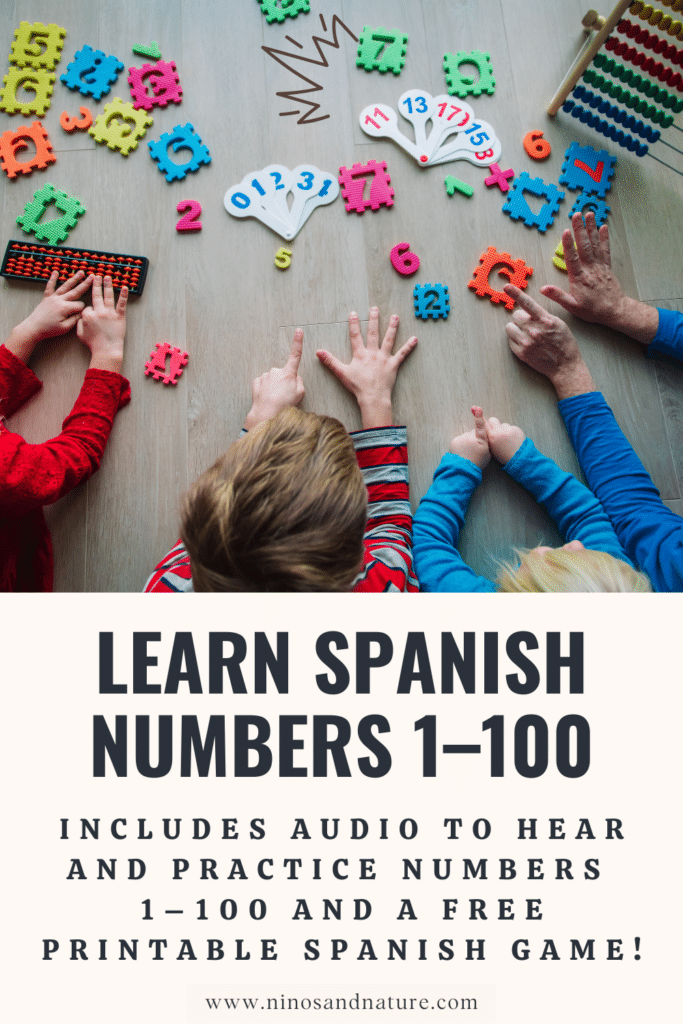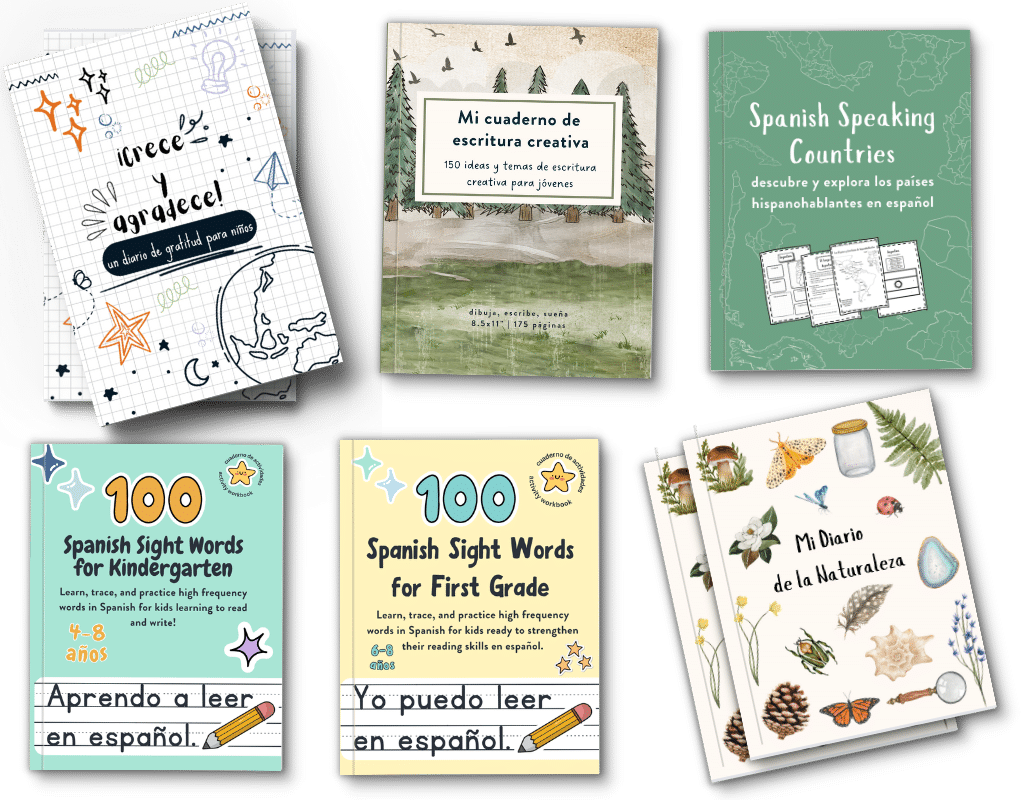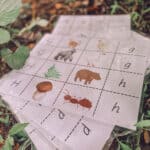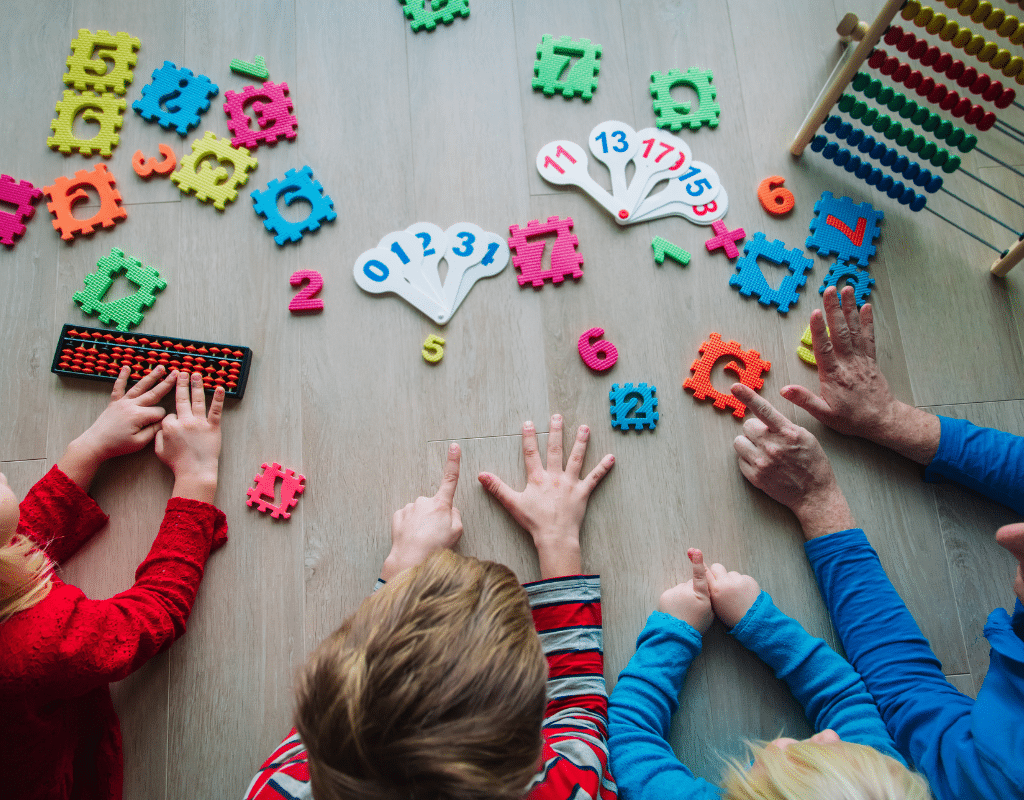
Spanish Numbers 1–100 for Kids: Free Game to Practice at Home or School
In this post: Help your kids learn Spanish numbers from 1–100 with fun, simple steps—and grab a free printable game, ¡Yo tengo! ¿Quién tiene?, to practice Spanish numbers in a fun way. Post may contain affiliate links.
Numbers are one of the first things we learn in any language, and for good reason. They’re practical, useful, and can be seamlessly integrated into everyday life. Whether you’re helping your kids count snacks, practicing math, or asking their age in Spanish, learning numbers is an essential building block of language acquisition.
The good news? Learning numbers in Spanish can be simple and fun! In this post, I’ll break down Spanish numbers 1-100 into easy steps. Plus, I’ve included a free printable game, ¡Yo tengo! ¿Quién tiene?, to help kids practice their Spanish numbers in a playful and engaging way.
Let’s dive in!
Table of Contents
Spanish Numbers 1-20
The first step in learning Spanish numbers is mastering 1-20. These numbers don’t follow a consistent pattern, so they need to be memorized—but don’t worry! With a little practice, they’ll come naturally.
Here are the numbers 1-20 in Spanish:
- uno
- dos
- tres
- cuatro
- cinco
- seis
- siete
- ocho
- nueve
- diez
- once
- doce
- trece
- catorce
- quince
- dieciséis
- diecisiete
- dieciocho
- diecinueve
- veinte
Start by practicing them out loud with your kids or using flashcards to help them visualize the words. Turning it into a fun counting game can make it easier for kids to remember!
Listen to the clip below to hear how each number is pronounced, and practice saying them out loud with your kids:
How to Count Beyond 20 in Spanish
Once you’ve got numbers 1-20 down, counting beyond 20 gets a lot easier because it follows a simple pattern. The numbers from 21 to 29 are formed by combining the base for “twenty” (veinte) with the numbers 1-9, all written as one word. Here’s how it looks:
- 21: veintiuno
- 22: veintidós
- 23: veintitrés
- 24: veinticuatro
You’ll notice that veintidós, veintitrés, and veintiséis have accents—don’t forget to include those when writing!
From 30 and up, it’s even more straightforward. Start with the base for the tens (like treinta for thirty or cuarenta for forty), add y (and), and then the ones. For example:
- 31: treinta y uno
- 42: cuarenta y dos
- 59: cincuenta y nueve
This same pattern works for every group of tens, so once you know the tens, you’re set!
Practice Tip: Focus on learning the tens (veinte, treinta, cuarenta, etc.) first, then add the ones as you go. Saying them out loud and repeating them with your kids is a great way to get comfortable. Before you know it, they’ll be counting like pros!
Listen to the clip below to hear the numbers from 20-30 and practice their pronunciation with your kids. Repeating them out loud together is one of the best ways to build confidence!
Counting to 100 in Spanish
After learning numbers in Spanish up to 30, the next step is counting by tens. These numbers are key because they make it so much easier to count all the way to 100! Once you’ve learned the tens, you’ll start to see how patterns in Spanish numbers 1–100 come together.
Here are the Spanish numbers by tens:
- 10: diez
- 20: veinte
- 30: treinta
- 40: cuarenta
- 50: cincuenta
- 60: sesenta
- 70: setenta
- 80: ochenta
- 90: noventa
- 100: cien
To help with pronunciation, listen to the clip below and practice saying each number out loud. It’s always helpful to repeat along with the recording until the words feel natural!
These numbers stay the same no matter what comes after them. For example, once you know cincuenta (fifty), you can easily say numbers like cincuenta y dos (52) or cincuenta y ocho (58).
Quick Tip: Try counting forward and backward by tens with your kids. You can even use objects like blocks or snacks to make it a hands-on activity. Listening to the clip and practicing as you go will help everyone feel more confident in no time!
Once you’ve mastered the tens, you’ll be well on your way to counting smoothly all the way to 100 in Spanish!
Spanish Number Games That Are Easy to Play
Games are one of the best ways to make learning Spanish numbers fun and hands-on! Whether you’re at home or in a classroom, these activities will get your kids counting in Spanish in no time. Here are a few favorites:
1. Bingo
Print a simple bingo sheet with Spanish numbers. Call out numbers in Spanish and have your kids mark the corresponding squares. For an added challenge, mix in phrases like “¿Quién tiene el número treinta y cinco?” instead of just saying the number.
2. Hopscotch Numbers
Take learning outside by creating a hopscotch grid with Spanish numbers using chalk. As your kids hop through the grid, they say each number out loud in Spanish.
3. Number Memory Match
Create pairs of cards with numbers written in digits on one card (e.g., 25) and in Spanish words on another (e.g., veinticinco). Mix them up, lay them face down, and take turns flipping cards to find matches.
4. Guess the Number
Think of a number and have your kids guess what it is by asking questions in Spanish. For example, “¿Es más grande que treinta?” (Is it bigger than 30?) or “¿Es menor que veinte?” (Is it less than 20?). This game is great for practicing comparison phrases and numbers at the same time!
5. “Yo tengo, ¿quién tiene?” Game
Last but not least – one of my favorite interactive card games! Yo tengo, ¿quién tiene? is perfect for reinforcing Spanish numbers. Each card says, “Yo tengo [number]. ¿Quién tiene [next number]?” Players take turns reading their cards until all the numbers have been reviewed.
Download my free printable game below to get started!
↓↓↓
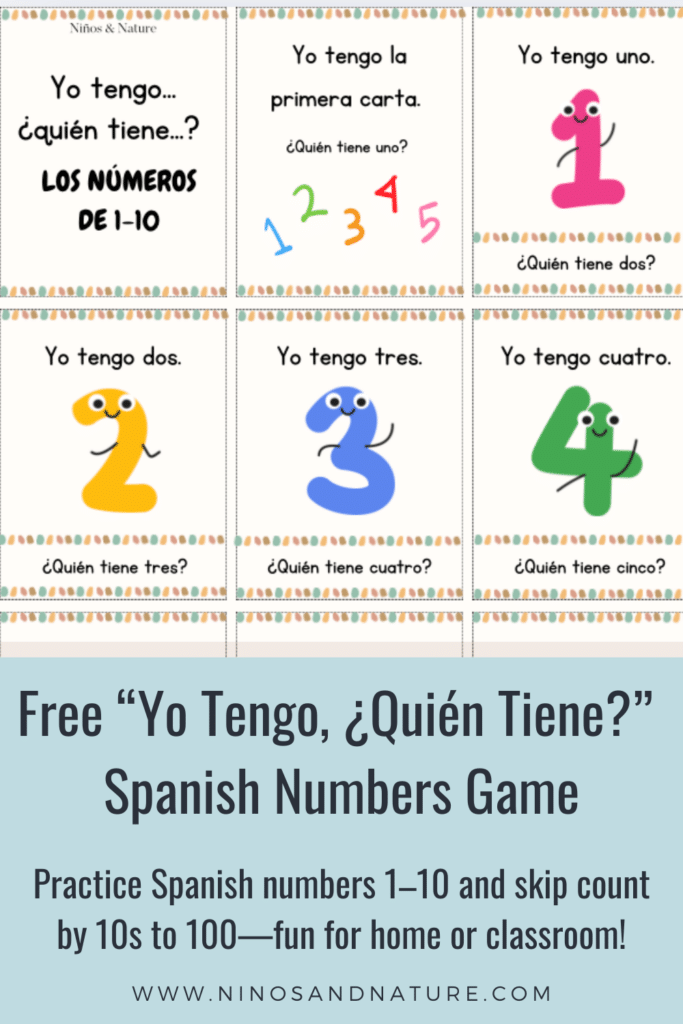
Grab Your Free “Yo Tengo, ¿Quién Tiene?” Spanish Game!
Grab your free “Yo Tengo, ¿Quién Tiene?” printable in my Spanish Freebie Library!—perfect for practicing Spanish vocabulary in a fun, engaging way with your kids or students!
Spanish Books for Kids about Numbers
Reading is such a great way to practice Spanish numbers with kids! Whether it’s through colorful illustrations or playful counting stories, books make learning numbers feel natural and engaging. Check out some of my favorites:
Take the Next Step in Your Bilingual Journey
If you loved this game, you’ll love everything I’ve created to help families learn Spanish together in a natural, meaningful way. From nature-inspired lessons to early literacy workbooks and beginner-friendly curriculum, my Spanish resources are designed for every stage of your bilingual journey. Ready to go deeper? Explore the full collection and find the perfect next step for your family.
Learning Spanish numbers doesn’t have to feel overwhelming. By breaking them into manageable steps, using fun games, and pairing them with books and activities, your kids can build confidence while having fun. Whether you’re focusing on Spanish numbers 1-20, mastering the patterns for counting beyond 20, or practicing Spanish numbers all the way up to 100, there’s always a way to make learning engaging.
Don’t forget to download the free ¡Yo tengo! ¿Quién tiene? printable game to keep practicing at home. It’s an easy and interactive way to review everything your kids have learned.
With a little practice and creativity, your kids will be counting in Spanish like pros in no time.
Like this post? Share & Save it!
